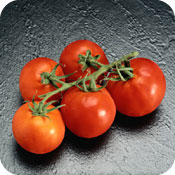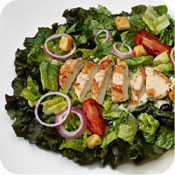
| Food |
In Refrigerator |
In Freezer |
| Fruits and Vegetables |
2-3 days |
6-8 months |
| Meats |
1-2 days |
3-4 months |
| Meat and Vegetable Combination |
1-2 days |
3-4 months |
Feeding Baby Foods:
- Listen for the click of the safety button popping up as you open the jar of baby food. This tells you that the jar has not been opened before.
- Only take the amount of food your baby will eat at one time out of the jar and place it in a bowl. You can cap and refrigerate the remaining food for up to two days.
- Throw away any food left in the bowl after your baby has finished eating. Once the spoon has been in your baby's mouth and in the bowl of food, it should NOT be saved. Bacteria from your baby's mouth is now in the food. The bacteria can multiply and may cause diarrhea, vomiting and other food borne illness, if used at a later feeding.
- It is not necessary to heat food before serving it to your baby, but heating may improve the flavor of meats and vegetables. Heat only the amount of food you will need by placing the food in a microwave safe bowl. If you plan to use the whole jar, you can heat the jar of baby food in a pan of water on the stove or in your microwave. If you choose to heat the jar of baby food, remove the lid and follow the directions on the jar.Make sure that the food is not too hot by stirring the food and taking a taste prior to feeding.
- Expect your baby to be "messy" while learning to eat. Put a bib on your baby and a plastic covering or newspaper on the floor.
- Pull your baby's high chair up to the dinner table so she can be part of the family.
- Trust your baby to decide how fast and how much to eat. Never force food on your baby. Your baby will lean forward and open his mouth when he is hungry and turn away and close his mouth to say "no more."
Feeding myself
- As your baby develops, watch for signs and signals that your baby may be ready for self-feeding. Your baby may try to help you, or put his hand on your hand and guide the spoon to his mouth.
- Start with finger foods because eating by hand is easier than eating with utensils.
- Let your baby grasp a spoon in one hand while you use another spoon for feeding.
- Use baby-friendly utensils, plates and bowls. Spoons should have a straight, wide handle and plates and bowls should have high, straight sides.
- Use the two-spoon method. Give your baby an empty spoon to hold, while you fill the other spoon with food. Then switch so your baby has a filled spoon to self-feed.
- Be patient and relax. Food will end up on the floor. It will take lots of practice.
- Remember... always stay with your baby when she is self-feeding to quickly react if chocking occurs.
Sources:
http://www.niaid.nih.gov/topics/foodAllergy/clinical/Documents/FAguidelinesPatient.pdf
http://www.aaaai.org/practice-resources/statements-and-practice-parameters/practice-parameters-and-other-guidelines-page.aspx
http://www2.aap.org/sections/allergy/allergy_guidelines_final_1.pdf
|


.jpg)




Member Comments